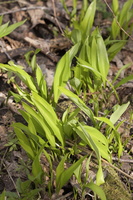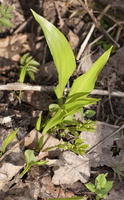- sort orderDefault
Photo title, A → Z
Photo title, Z → A
✔ Date created, new → old
Date created, old → new
Date posted, new → old
Date posted, old → new
Visits, high → low
Random
 home / Plantae · augalai / Amaryllidaceae · amariliniai / Allium ursinum · meškinis česnakas
home / Plantae · augalai / Amaryllidaceae · amariliniai / Allium ursinum · meškinis česnakas

Allium ursinum · meškinis česnakas
All parts of the Allium ursinum plant are edible and have culinary uses, including the flower which can be used to garnish salads. The leaves of the Allium ursinum are the most popular part to be used in food. Leaves can be used in raw salads and carry a very subtle garlicky flavour similar to that of garlic chives. When picked the leaves bruise, making them smell even stronger. When cooked the flavour of the leaves becomes softer and sweeter.
Daugiametis, 15-20 cm aukščio, svogūninis, žolinis augalas. Stiebas stačias, tribriaunis, kartais apvalus. Lapai 2, pamatiniai, plokšti, pailgai lancetiški, 15 cm ilgio ir 3-5 cm pločio. Žiedai žvaigždiški, vainiklapiai balti. Vaisius – tribriaunė rutuliška dėžutė. Sėklos beveik rutuliškos. Žydi gegužės mėn., dauginasi sėklomis ir svogūnėliais. Auga ūksmėtuose lapuočių miškuose, mėgsta apydrėgnius, derlingus dirvožemius.
Buvo Lietuvos Raudonojoje Knygoje. Nerinkite gamtoje, galima auginti darže, sėklos parduodamos sodininkų parduotuvėse.

